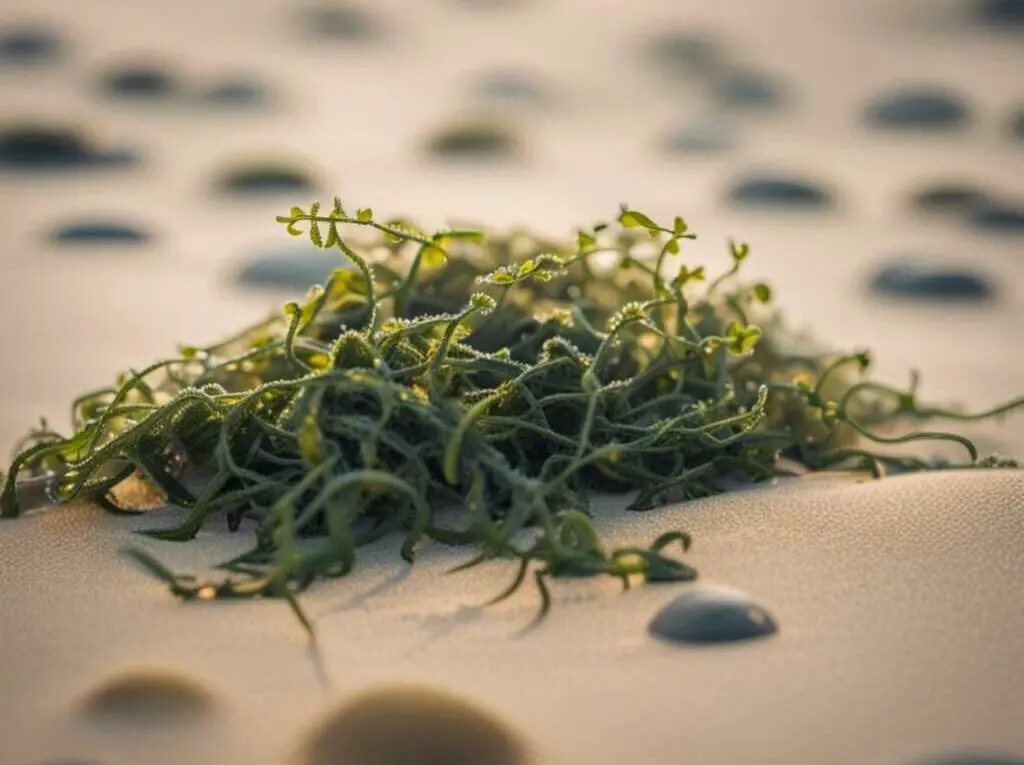Does Sint Maarten Have Seaweed? Exploring Local Beaches!
Welcome to Sint Maarten, a Caribbean paradise known for its picturesque beaches and crystal-clear waters. As a popular tourist destination, Sint Maarten’s coastline is an essential part of its economy and identity. However, over the years, the island has been facing an increasing challenge – seaweed accumulation.
As you plan your trip to Sint Maarten, you may wonder: Does Sint Maarten Have Seaweed? This article aims to explore this question and shed light on the current seaweed situation in Sint Maarten. We’ll delve into the various types of seaweed found along the coast, its ecological role, and the impact it can have on beach conditions.
Furthermore, we will showcase some of Sint Maarten’s most beautiful and seaweed-free beaches, highlight environmental conservation efforts, and provide practical tips for visitors to enjoy a seaweed-free beach experience. Let’s dive in and explore the ecological riches of Sint Maarten’s coastline while maintaining its pristine beaches that have made it a top tourist destination.
Table of Contents
- 1 Key Takeaways:
- 2 Does Sint Maarten Have Seaweed?
- 3 The Ecological Riches of Sint Maarten’s Coastline
- 4 Understanding Seaweed in Sint Maarten
- 5 Exploring Sint Maarten’s Pristine Beaches
- 6 The Current Seaweed Situation in Sint Maarten
- 7 Environmental Conservation Efforts in Sint Maarten
- 8 Tips for Seaweed-Free Beach Visits
- 9 Sustainable Tourism and Beach Management
- 10 Community Involvement in Seaweed Management
- 11 Frequently Asked Questions (FAQs) about Seaweed in Sint Maarten
- 12 Conclusion
- 13 Frequently Asked Questions (FAQs)
- 13.1 Does Sint Maarten have seaweed?
- 13.2 What types of seaweed are common in Sint Maarten?
- 13.3 How does seaweed impact the local environment?
- 13.4 Are there any seaweed-free beaches in Sint Maarten?
- 13.5 When is the best time to visit Sint Maarten’s beaches?
- 13.6 Are there any initiatives to address seaweed accumulation in Sint Maarten?
- 13.7 How can visitors help maintain the health of Sint Maarten’s beaches and coastal ecosystems?
- 14 Author
Key Takeaways:
- Sint Maarten may experience seaweed influx on its beaches during certain periods.
- Seaweed occurrence is common in many coastal regions, including the island.
- The island’s breathtaking coastal charm remains unaffected by seaweed influx.
- Check the current beach conditions for planning an optimal beach experience.
- Some visitors appreciate the ecological significance of seaweed, while others prefer seaweed-free beaches for sunbathing and water activities.
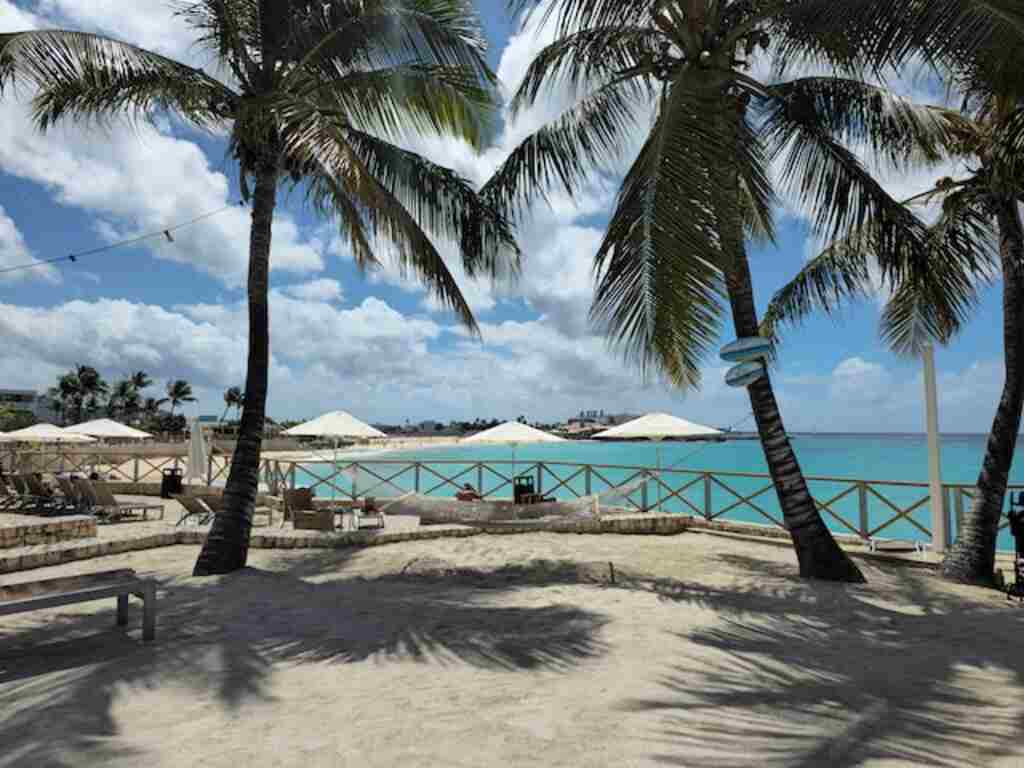
Does Sint Maarten Have Seaweed?
Yes, Sint Maarten, being a coastal area, may experience seaweed influx on its beaches during certain periods. While seaweed occurrence is common in many coastal regions, the island’s breathtaking coastal charm remains unaffected. Visitors can still relish the scenic beauty and crystal-clear waters of the beaches. To plan an optimal beach experience, it’s advisable to check the current beach conditions before visiting.
The Ecological Riches of Sint Maarten’s Coastline
Sint Maarten’s coastline is a haven for diverse and unique ecosystems. The island’s beaches are renowned for their pristine white sand and crystal-clear waters, but it is the hidden treasures beneath the surface that truly make this destination a must-visit for nature enthusiasts.
From coral reefs to seagrass beds and mangrove forests, Sint Maarten’s coastal areas are teeming with life. These ecosystems provide vital habitat and shelter for a wide range of marine species, including sea turtles, rays, and countless fish species. They also play essential roles in maintaining the overall health of the ocean and mitigating the impacts of climate change, such as carbon sequestration and storm surge protection.
However, the health of these ecosystems is threatened by a range of human activities, including pollution, overfishing, and coastal development. In recent years, the accumulation of excessive seaweed on beaches has also become a growing concern for both environmental and tourism reasons.
The Importance of Maintaining Beach Ecosystems
Seaweed plays a vital ecological role in the marine environment, providing food, oxygen, and habitat for a variety of marine organisms. However, excessive accumulation of seaweed on beaches can negatively impact ecosystems and beach conditions.
When seaweed washes up on beaches in large quantities, it can lead to an increase in the number of sand flies, which are known to cause discomfort and allergic reactions in some people. Additionally, as the seaweed decomposes, it can release an unpleasant odor that can deter beachgoers and impact the overall beach experience. Furthermore, the presence of excessive seaweed on beaches can harm nesting and hatching sea turtles, obstructing their ability to crawl up the beach to lay their eggs and hatch.
Therefore, it is essential to maintain a balance between the benefits of seaweed and the potential negative impacts of its accumulation.
Understanding Seaweed in Sint Maarten
Sint Maarten’s pristine beaches are renowned for their crystal-clear waters and picturesque landscapes. However, seaweed accumulation can significantly impact the natural beauty of these coastal ecosystems. To address this issue, we need to understand the types of seaweed that are present in Sint Maarten’s waters, their ecological role, and potential impacts.
| Type of Seaweed | Description |
|---|---|
| Sargassum | Commonly found in Sint Maarten’s waters, this brownish seaweed is known for its distinctive leaflets and air-filled floats that enable it to float on the surface of the ocean. |
| Ulva | Also known as sea lettuce, this green seaweed is often found in shallow waters and has a leafy appearance. |
| Caulerpa | This green seaweed has a unique appearance, resembling a bunch of grapes. It is often found in warm waters and is known to grow rapidly. |
Seaweed plays an important role in marine ecosystems, providing habitat and food for numerous marine species. However, excessive seaweed accumulation can lead to a variety of environmental and economic impacts. For instance, decomposition of seaweed can lead to low oxygen levels in the water, potentially harming fish and other marine life. Seaweed accumulation can also negatively impact the tourism industry, driving away visitors seeking a clean and pristine beach experience.
It is important to note that not all seaweed is harmful or considered a nuisance. In fact, some types of seaweed, such as red algae, are highly valued for their nutritional and medicinal properties.
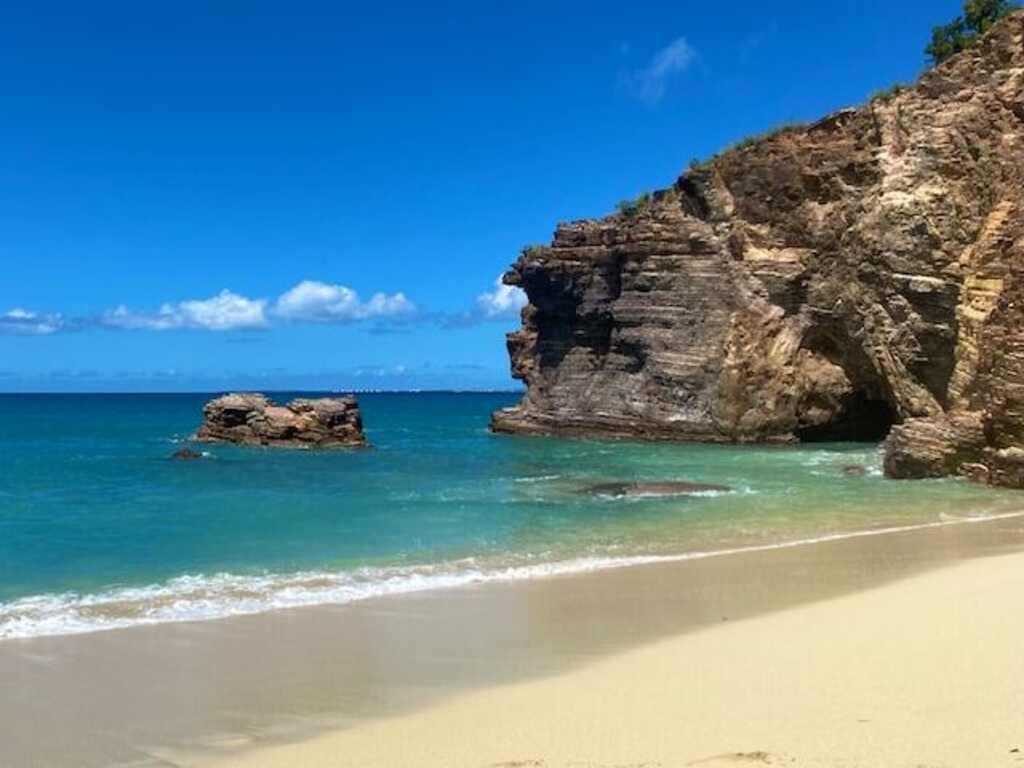
Exploring Sint Maarten’s Pristine Beaches
Sint Maarten is known for its beautiful beaches that attract tourists from all over the world. The island has a vast coastline that offers a diverse range of beaches, each with its unique features and amenities. For those seeking a peaceful and relaxing beach experience, there are plenty of options to choose from.
The following are some of Sint Maarten’s most beautiful and seaweed-free beaches:
| Beach Name | Location | Features and Amenities |
|---|---|---|
| Dawn Beach | West coast of Sint Maarten | Crystal-clear water, pristine sand, and scenic views. Has beach chairs and umbrellas, restaurants, and bars nearby. |
| Little Bay Beach | Southwest coast of Sint Maarten | Secluded cove with calm waters, ideal for swimming and snorkeling. Has a beach bar and nearby restaurants. |
| Orient Bay Beach | North-east coast of Sint Maarten | One of the largest and most popular beaches on the island, with white sand and crystal-clear water. Has beach chairs and umbrellas, restaurants, bars, and water sports. |
These beaches are well-maintained and offer visitors a glimpse of Sint Maarten’s natural beauty. Whether you want to bask in the sun, swim in the sea, or enjoy water sports, these beaches have something for everyone.
Exploring Sint Maarten’s Pristine Beaches
If you want to explore Sint Maarten’s beaches further, there are many other options to choose from, depending on your preferences and interests. Here are some other noteworthy beaches on the island:
- Mullet Bay Beach
- Cupecoy Beach
- Maho Beach
- Great Bay Beach
These beaches offer a range of activities and facilities, including beach bars, restaurants, water sports, and snorkeling spots.
Sint Maarten’s beaches are a valuable asset to the island’s tourism industry, and maintaining their natural beauty is crucial for sustainable beach tourism.
The Current Seaweed Situation in Sint Maarten
Seaweed is a natural occurrence in the marine environment, and its presence on beaches is not uncommon. However, excessive accumulation of seaweed can have negative impacts on the local environment and beachgoers’ experiences.
In recent years, Sint Maarten has experienced a sporadic increase in seaweed accumulation, especially during the summer months. The increasing trend is attributed to a variety of factors, including changes in ocean currents, wind patterns, and climate conditions.
Local authorities and organizations have been implementing measures to manage seaweed accumulation and maintain the quality of the island’s beaches. These measures include regular cleaning and maintenance of beaches, reducing pollution and erosion, and promoting sustainable tourism practices.
At present, the seaweed situation in Sint Maarten is under control, with most beaches experiencing minimal seaweed accumulation. Visitors are encouraged to check with local authorities or beach operators for current conditions and advisories before heading to the beach.
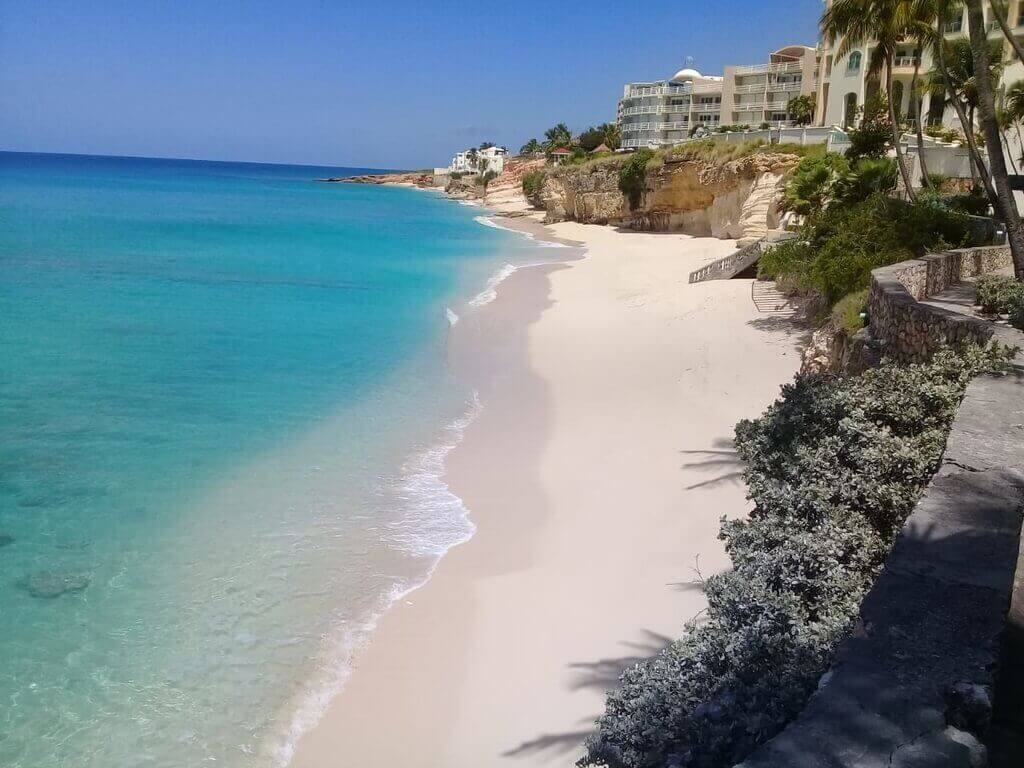
Environmental Conservation Efforts in Sint Maarten
Sint Maarten’s coastal ecosystems are a vital part of its biodiversity and tourist economy. To ensure their long-term sustainability, local authorities and organizations have implemented various environmental conservation efforts.
Initiatives towards Seaweed-Free Beaches
In recent years, the increasing amount of seaweed accumulation has been a cause of concern for beachgoers and environmentalists. To tackle this issue, local organizations and volunteers have taken initiatives to maintain seaweed-free beaches.
| Efforts taken towards seaweed management | Description |
|---|---|
| Community-Led Cleanups | Community-led initiatives have been successful in organizing beach cleanups, removing accumulated seaweed and other debris from the beaches. |
| Seaweed Harvesting | Some local organizations have harvested seaweed for commercial purposes, utilizing it for organic fertilizers, livestock feed, and other products. This also helps in reducing the amount of seaweed on beaches. |
| Mechanical Cleaning | The government has invested in mechanical cleaning machines that can efficiently remove seaweed from the shorelines. |
These initiatives have been successful in restoring the natural beauty of Sint Maarten’s beaches and preserving its ecosystem.
Sustainable Beach Tourism
Sint Maarten’s tourist economy is largely dependent on its pristine beaches, making it paramount to practice sustainable beach tourism. The Sint Maarten Nature Foundation, the island’s conservation organization, has launched a sustainable beach management program that focuses on preserving the island’s coastal ecosystems.
To achieve sustainable beach tourism, the program provides waste management solutions and promotes responsible behavior among beachgoers. These include guidelines on proper waste disposal, minimizing beach light pollution, and reducing the use of single-use plastics.
Collaborative Efforts
Collaborative efforts between various stakeholders, such as government agencies, conservation organizations, and communities, have been crucial in maintaining the balance between beach tourism and environmental conservation.
For instance, the Sint Maarten Hospitality and Trade Association has joined hands with the Sint Maarten Nature Foundation to launch “Save SXM,” a campaign aimed at promoting environmental conservation and reducing the island’s carbon footprint.
By working hand-in-hand, the island’s stakeholders can ensure the continued success of its beach tourism industry while preserving its natural resources.
Tips for Seaweed-Free Beach Visits
While occasional seaweed deposits can be part of a healthy beach ecosystem, excessive accumulations can impact the sand quality and make swimming difficult. Here are some tips to help you enjoy a seaweed-free beach experience in Sint Maarten:
- Do your research: Check the latest updates and local weather forecasts to avoid seaweed-heavy periods. Some beaches are more prone to seaweed accumulation than others, so look for those with a reputation for consistently clear waters.
- Timing is key: Seaweed tends to accumulate on beaches during the summer months and after storms, so plan your visit accordingly. Try to avoid visiting during high tide as well, when seaweed is more easily deposited on shore.
- Beach selection: Choose beaches that have personnel responsible for regular seaweed removal, to keep the sand clear and safety of the beach visitors. Orient Beach and Cupecoy Beach are just a couple of examples of beaches with regular seaweed removal.
- Swim further out: Seaweed is generally concentrated closer to the shore, so you may be able to avoid it by swimming further out. Just remember to always swim within the designated swimming areas and be mindful of any strong currents.
- Bring your own equipment: Consider bringing your own beach chairs and umbrellas to avoid seaweed-covered rentals.
Remember, the presence of seaweed on a beach does not necessarily mean it is dirty or unsafe. It is also important to respect the delicate balance of the coastal ecosystem and avoid removing seaweed yourself. By following these tips, you can enjoy a wonderful and seaweed-free beach experience in Sint Maarten.
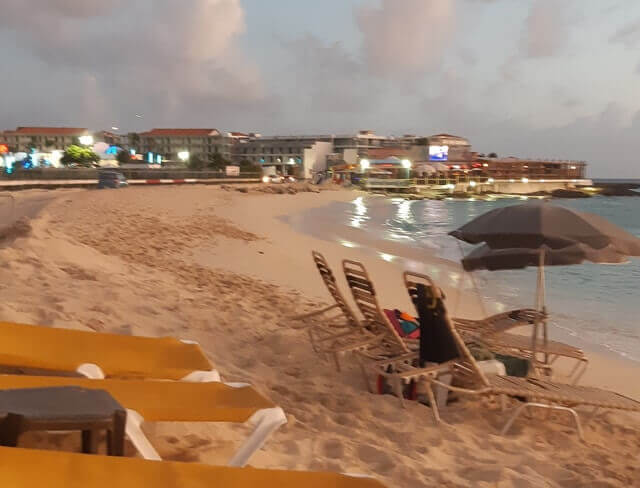
Sustainable Tourism and Beach Management
As Sint Maarten’s tourism industry continues to grow and thrive, it is crucial to adopt sustainable practices to preserve the island’s pristine beaches and coastal ecosystems for future generations. Beach management is a pivotal component of sustainable tourism, and it involves a collaborative effort between local authorities, residents, and visitors.
One of the primary goals of sustainable tourism and beach management is to minimize the impact of seaweed accumulation on beach conditions. This can be achieved through various measures, such as regular beach clean-ups, proper waste disposal, and the enforcement of environmental regulations. By minimizing the impact of seaweed, we can ensure that tourists enjoy a pleasant beach experience and that the local environment remains healthy and vibrant.
Environmental Testing and Monitoring
To effectively manage beaches and minimize the impact of seaweed, it is crucial to conduct regular environmental testing and monitoring. This includes measuring the water quality, assessing the seaweed levels, and monitoring the impact of tourism on the local environment. By regularly analyzing and evaluating the state of the ecosystem, authorities can take proactive measures to address any potential challenges and maintain the balance between tourism and environmental conservation.
Education and Awareness
An essential aspect of sustainable tourism and beach management is education and awareness. By raising awareness among visitors and residents, we can encourage responsible behavior and promote a culture of environmental stewardship. This can include providing information on the importance of maintaining a healthy ecosystem, encouraging proper waste disposal, and minimizing any negative impact on the local environment.
Collaborative Efforts
Finally, sustainable tourism and beach management require collaborative efforts between various stakeholders, including local authorities, residents, tourists, and businesses. By working together, we can create a shared vision for the future of Sint Maarten’s beaches and ensure that they remain a treasured resource for generations to come.
Community Involvement in Seaweed Management
Community involvement is crucial in managing seaweed accumulation in Sint Maarten. Local residents, businesses, and organizations can play a significant role in preserving the island’s pristine beaches and coastal ecosystems.
One way that communities can get involved is through volunteer programs focused on beach cleanups. By upholding responsible tourism practices and participating in organized cleanup efforts, individuals can help reduce the impact of seaweed accumulation on beach conditions and promote sustainable tourism in Sint Maarten.
Community-led initiatives, such as the “Leave Only Footprints” campaign, aim to raise awareness about the importance of minimizing human impact on the local environment. Through education and outreach efforts, these initiatives encourage visitors and residents alike to be mindful of their impact on the island’s beaches and ecosystems.
Ultimately, community involvement in seaweed management can help ensure that Sint Maarten’s beaches remain clean, healthy, and accessible for generations to come. By working together, we can uphold responsible tourism practices and protect the ecological riches that make the island a unique and valuable destination.
Frequently Asked Questions (FAQs) about Seaweed in Sint Maarten
Here are some of the most commonly asked questions regarding seaweed on Sint Maarten’s beaches:
- Does Sint Maarten have seaweed?
Yes, seaweed can be found on some of Sint Maarten’s beaches. However, some beaches are virtually seaweed-free. - What causes seaweed accumulation on Sint Maarten’s beaches?
Seaweed accumulation can be caused by a variety of factors, including ocean currents, climate change, and human activity. - Is seaweed harmful to Sint Maarten’s beaches and environment?
Seaweed can have ecological benefits, but excessive accumulation can lead to negative impacts such as unpleasant odors, decreased water quality, and reduced beach access. - Are there any eco-friendly ways to manage seaweed on Sint Maarten’s beaches?
Yes, there are many eco-friendly methods to manage seaweed accumulation, including beach cleaning programs, composting, and seaweed farming. - Can I still enjoy Sint Maarten’s beaches even if there is seaweed?
Yes, many of Sint Maarten’s beaches have clear sections and there are plenty of activities to enjoy beyond the sandy shoreline. It is also possible to visit seaweed-free beaches on the island.
“Seaweed can have ecological benefits, but excessive accumulation can lead to negative impacts such as unpleasant odors, decreased water quality, and reduced beach access.”
By understanding the relationship between seaweed and Sint Maarten’s beaches, visitors can make informed decisions about where to visit and how to enjoy the island’s natural beauty.
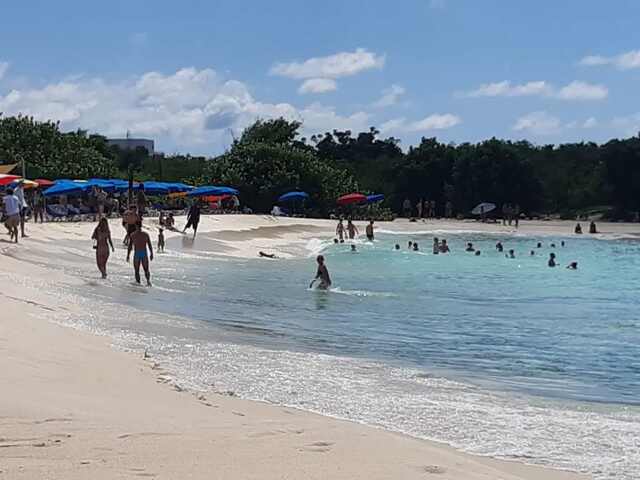
Conclusion
Sint Maarten’s coastal ecosystems and pristine beaches are a vital part of the island’s tourism industry and natural heritage. While seaweed accumulation can pose challenges to the beach experience, it is important to remember the ecological role of seaweed and the need to maintain a delicate balance between beach tourism and environmental conservation.
Through collaborative efforts between local authorities, organizations, and the community, as well as sustainable tourism practices and responsible beach management, Sint Maarten can continue to offer visitors a world-class beach experience while preserving its natural beauty for generations to come.
Frequently Asked Questions (FAQs)
Does Sint Maarten have seaweed?
Yes, seaweed can be found in Sint Maarten’s waters. However, the extent and frequency of seaweed accumulation can vary throughout the year.
What types of seaweed are common in Sint Maarten?
Some of the most common types of seaweed found in Sint Maarten include Sargassum and Halimeda. These species play an important role in marine ecosystems and provide essential habitat and food for many marine animals.
How does seaweed impact the local environment?
Excessive seaweed accumulation can lead to a number of challenges, including decreased water quality, reduced oxygen levels, and potential negative impacts on tourism and recreational activities. However, seaweed also provides benefits to marine ecosystems and can serve as an indicator of changes in ocean conditions.
Are there any seaweed-free beaches in Sint Maarten?
Yes, there are a number of beaches in Sint Maarten that are typically free of seaweed accumulation. Some of these include Mullet Bay Beach, Great Bay Beach, and Maho Beach.
When is the best time to visit Sint Maarten’s beaches?
The best time to visit Sint Maarten’s beaches can vary depending on a number of factors, including weather conditions, seaweed accumulation, and tourist season. However, the winter months (December-February) and early spring (March-April) are typically considered the peak season for beach tourism.
Are there any initiatives to address seaweed accumulation in Sint Maarten?
Yes, there are a number of initiatives aimed at addressing seaweed accumulation in Sint Maarten. These include beach cleanup efforts, seaweed monitoring programs, and research into innovative solutions for managing seaweed accumulation.
How can visitors help maintain the health of Sint Maarten’s beaches and coastal ecosystems?
Visitors can help maintain the health of Sint Maarten’s beaches and coastal ecosystems by practicing responsible beach behavior, such as properly disposing of trash and avoiding disturbing marine wildlife. Additionally, supporting local conservation efforts and staying informed about environmental issues can help promote sustainable tourism practices.

